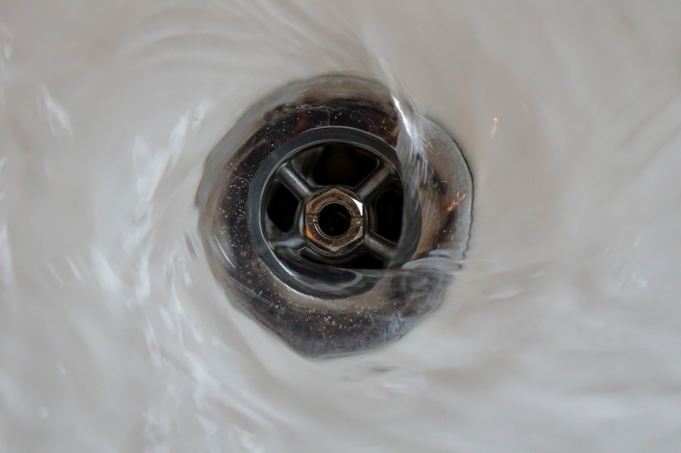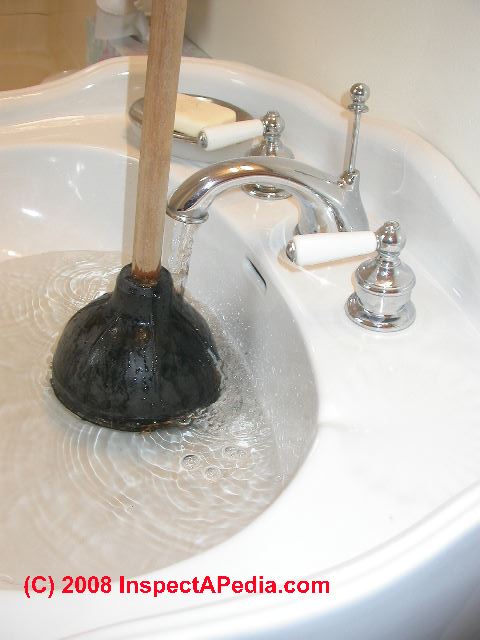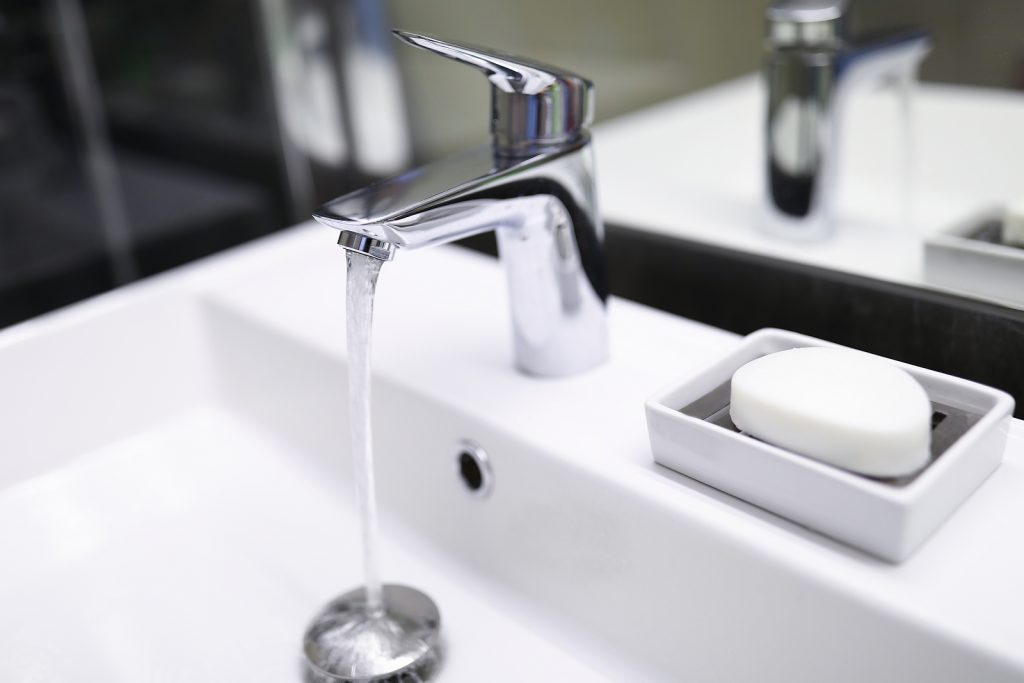Are you frustrated by the slow water flow in your bathroom sink? This common problem can be a major inconvenience, causing delays in your daily routine and making it difficult to get things done efficiently. But don't worry, there are ways to fix this issue and get your bathroom sink running smoothly again. In this article, we'll explore the causes of slow water flow in bathroom sinks and provide solutions to help you improve the water flow in your sink. Slow Water Flow in Bathroom Sink: Causes and Solutions
One of the most common causes of slow water flow in bathroom sinks is a clogged drain. Over time, hair, soap scum, and other debris can build up in the drain and cause a blockage. To fix this issue, start by removing any visible debris from the drain using a pair of tweezers or a drain snake. Once you've removed as much as you can, mix together a solution of hot water and baking soda and pour it down the drain. Let it sit for a few minutes before flushing it out with hot water. This should help to dissolve any remaining debris and improve the water flow in your sink. How to Fix a Slow Draining Bathroom Sink
If your bathroom sink has low water pressure, the problem may be with the aerator. The aerator is a small filter at the end of the faucet that helps to regulate the water flow and prevent splashing. Over time, mineral deposits can build up in the aerator and block water from flowing freely. To fix this issue, simply unscrew the aerator from the faucet and clean it with a mixture of equal parts water and vinegar. This should help to remove any build-up and improve the water flow in your sink. Troubleshooting Low Water Pressure in Bathroom Sink
If cleaning the drain and aerator doesn't improve the water flow in your bathroom sink, the problem may be with the water supply lines. Over time, these lines can become clogged with debris and mineral deposits, restricting the water flow. To fix this issue, turn off the water supply to your sink and remove the supply lines. Soak them in a mixture of equal parts water and vinegar for a few minutes before scrubbing them with a brush to remove any build-up. Rinse them thoroughly and reattach them to the sink. This should help to improve the water flow in your bathroom sink. How to Increase Water Flow in Bathroom Sink
Aside from clogged drains, aerators, and supply lines, there are other common reasons for slow water flow in bathroom sinks. These include low water pressure in your home, old or faulty plumbing, and a faulty faucet. If you've tried all of the above solutions and are still experiencing slow water flow, it may be time to call a professional plumber to assess the problem and provide a solution. Common Reasons for Slow Water Flow in Bathroom Sink
If you're a handy homeowner, there are some simple DIY fixes you can try to improve the water flow in your bathroom sink. One option is to install a water pressure booster, which helps to increase the water pressure in your home. Another option is to replace the faucet with a newer, more efficient model. You can also try replacing the supply lines and aerator with high-flow versions to improve the water flow. Just be sure to do your research and follow the manufacturer's instructions carefully. DIY Fixes for Slow Water Flow in Bathroom Sink
Cleaning and unclogging a slow draining bathroom sink is a simple task that can be done in a few easy steps. Start by removing any visible debris from the drain using a pair of tweezers or a drain snake. Then, pour a mixture of hot water and baking soda down the drain and let it sit for a few minutes. Finally, flush the drain with hot water to remove any remaining debris. If the clog is stubborn, you can also try using a plunger to help dislodge it. How to Clean and Unclog a Slow Draining Bathroom Sink
Prevention is key when it comes to maintaining good water flow in your bathroom sink. To prevent clogs and build-up, be sure to clean your sink and drain regularly. Use a hair catcher in the drain to prevent hair from getting trapped and causing a blockage. You can also flush your drain with hot water and baking soda once a month to help prevent build-up. Tips for Maintaining Good Water Flow in Bathroom Sink
If you're experiencing slow water flow in your bathroom sink, it's important to identify the cause of the problem before attempting to fix it. Start by checking the drain and aerator for any visible debris. If that doesn't solve the issue, try cleaning the supply lines. If none of these solutions work, it may be time to call a professional plumber to assess the problem and provide a solution. How to Identify and Fix a Slow Water Flow Problem in Bathroom Sink
If you've tried all of the DIY solutions and are still experiencing slow water flow in your bathroom sink, it's best to call a professional plumber. They will have the expertise and tools to accurately diagnose the problem and provide a long-term solution. This may involve replacing old or faulty plumbing, installing a water pressure booster, or replacing the faucet. While it may be a more expensive solution, it will ensure that your bathroom sink has good water flow for years to come. Professional Solutions for Slow Water Flow in Bathroom Sink
The Importance of Efficient Water Flow in Your Bathroom Sink
/close-up-of-overflowing-bathroom-sink-90201417-579787783df78ceb865822d8.jpg)
Maximizing Functionality and Aesthetics
The Frustration of Slow Water Flow
 We've all experienced the frustration of slow water flow in our bathroom sink. It not only makes simple tasks like brushing our teeth or washing our hands more time-consuming, but it also impacts the overall efficiency of the bathroom.
It can also lead to water wastage and higher utility bills.
Slow water flow can also be a sign of underlying plumbing issues, which can lead to costly repairs if not addressed promptly.
We've all experienced the frustration of slow water flow in our bathroom sink. It not only makes simple tasks like brushing our teeth or washing our hands more time-consuming, but it also impacts the overall efficiency of the bathroom.
It can also lead to water wastage and higher utility bills.
Slow water flow can also be a sign of underlying plumbing issues, which can lead to costly repairs if not addressed promptly.
Causes of Slow Water Flow
 There are several reasons why your bathroom sink may have a slow water flow. One of the most common causes is a clogged aerator.
An aerator is a small attachment at the end of the faucet that mixes air into the water to reduce splashing and conserve water.
Over time, minerals and debris can build up in the aerator, hindering the water flow. Another common cause is a clogged or damaged pipe, which can restrict water flow. Low water pressure from the main water supply can also contribute to slow water flow in your bathroom sink.
There are several reasons why your bathroom sink may have a slow water flow. One of the most common causes is a clogged aerator.
An aerator is a small attachment at the end of the faucet that mixes air into the water to reduce splashing and conserve water.
Over time, minerals and debris can build up in the aerator, hindering the water flow. Another common cause is a clogged or damaged pipe, which can restrict water flow. Low water pressure from the main water supply can also contribute to slow water flow in your bathroom sink.
The Solution: Regular Maintenance and Upgrades
 To avoid the frustration and inconvenience of slow water flow in your bathroom sink, regular maintenance is key.
Clean the aerator periodically to prevent buildup and ensure efficient water flow.
If you notice a significant decrease in water flow, it may be time to replace the aerator altogether. Additionally, consider upgrading to a high-efficiency faucet, which can significantly improve water flow while also conserving water.
To avoid the frustration and inconvenience of slow water flow in your bathroom sink, regular maintenance is key.
Clean the aerator periodically to prevent buildup and ensure efficient water flow.
If you notice a significant decrease in water flow, it may be time to replace the aerator altogether. Additionally, consider upgrading to a high-efficiency faucet, which can significantly improve water flow while also conserving water.
Conclusion
 Efficient water flow in your bathroom sink is crucial for both functionality and aesthetics. Regular maintenance and upgrades can help prevent slow water flow and the accompanying frustration and potential plumbing issues. So next time you're designing or renovating your bathroom, remember to pay attention to this small yet essential detail for a more efficient and visually appealing space.
Efficient water flow in your bathroom sink is crucial for both functionality and aesthetics. Regular maintenance and upgrades can help prevent slow water flow and the accompanying frustration and potential plumbing issues. So next time you're designing or renovating your bathroom, remember to pay attention to this small yet essential detail for a more efficient and visually appealing space.












































:max_bytes(150000):strip_icc()/increase-low-shower-pressure-4052359_FINAL_01-6ece340f72f74bf9ae59e4192b03c0bc.png)


















:max_bytes(150000):strip_icc()/freshen-and-unclog-drain-with-baking-soda-1900466-22-bbf940b70afa4d5abef0c54da23b1d3f.jpg)




























